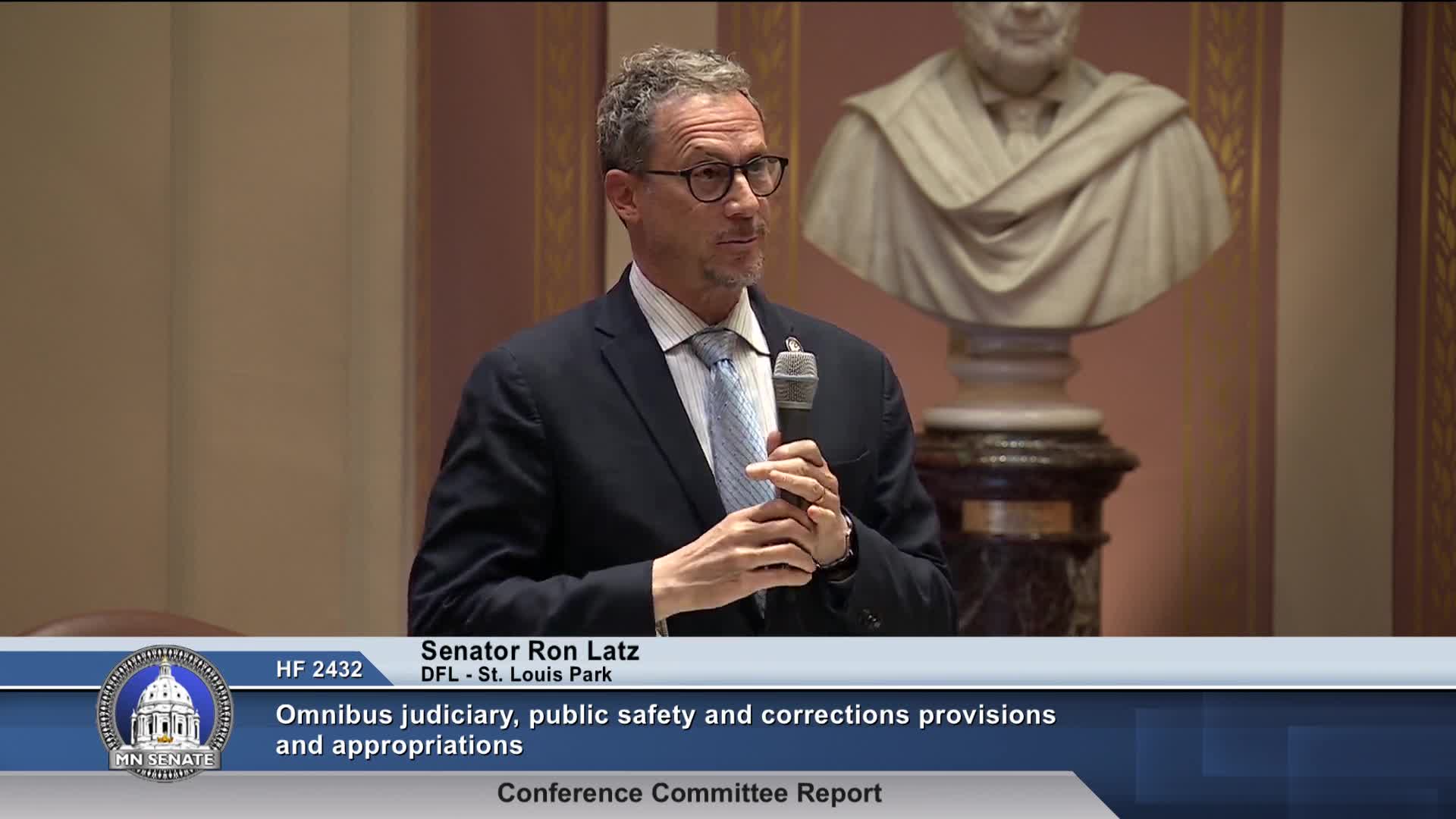Minnesota focuses on rehabilitation over incarceration to enhance public safety
May 18, 2025 | 2025 Legislature MN, Minnesota
This article was created by AI summarizing key points discussed. AI makes mistakes, so for full details and context, please refer to the video of the full meeting. Please report any errors so we can fix them. Report an error »

The Minnesota Senate Floor Session on May 18, 2025, focused on critical discussions surrounding public safety, corrections, and resource allocation within the state's Department of Corrections. Key points included the effectiveness of the Sentencing to Service (STS) program, the importance of legislative oversight, and the state's approach to rehabilitation and recidivism.
During the session, lawmakers emphasized the need for careful targeting of limited resources in a fiscally responsible manner. The STS program, which provides alternatives to incarceration, was highlighted as a cost-saving measure that reduces the financial burden of housing offenders in local jails. While some concerns were raised about potential property tax increases to support the program, it was noted that the value of STS in reducing incarceration costs could mitigate such increases.
Senators also discussed the ongoing oversight of the corrections system, with plans for a bipartisan oversight committee meeting scheduled for September. This committee aims to ensure accountability in the administration's decisions regarding corrections policies, particularly concerning the phased implementation of new initiatives.
The conversation extended to the broader context of public safety in Minnesota, where lawmakers reiterated a long-standing bipartisan commitment to incarcerating violent offenders while focusing on rehabilitation. The state invests in various programs that provide treatment for offenders, including mental health and chemical dependency services, as well as educational opportunities. This comprehensive approach aims to equip individuals with the skills necessary for successful reintegration into society, thereby reducing recidivism rates.
Comparisons were drawn with neighboring Wisconsin, where a higher percentage of serious offenders are incarcerated without a corresponding improvement in public safety outcomes. Minnesota's strategy, which emphasizes rehabilitation over mere incarceration, was praised as both effective and cost-efficient.
Overall, the session underscored Minnesota's commitment to a balanced approach to corrections, prioritizing public safety while also investing in the rehabilitation of offenders to foster a safer community.
During the session, lawmakers emphasized the need for careful targeting of limited resources in a fiscally responsible manner. The STS program, which provides alternatives to incarceration, was highlighted as a cost-saving measure that reduces the financial burden of housing offenders in local jails. While some concerns were raised about potential property tax increases to support the program, it was noted that the value of STS in reducing incarceration costs could mitigate such increases.
Senators also discussed the ongoing oversight of the corrections system, with plans for a bipartisan oversight committee meeting scheduled for September. This committee aims to ensure accountability in the administration's decisions regarding corrections policies, particularly concerning the phased implementation of new initiatives.
The conversation extended to the broader context of public safety in Minnesota, where lawmakers reiterated a long-standing bipartisan commitment to incarcerating violent offenders while focusing on rehabilitation. The state invests in various programs that provide treatment for offenders, including mental health and chemical dependency services, as well as educational opportunities. This comprehensive approach aims to equip individuals with the skills necessary for successful reintegration into society, thereby reducing recidivism rates.
Comparisons were drawn with neighboring Wisconsin, where a higher percentage of serious offenders are incarcerated without a corresponding improvement in public safety outcomes. Minnesota's strategy, which emphasizes rehabilitation over mere incarceration, was praised as both effective and cost-efficient.
Overall, the session underscored Minnesota's commitment to a balanced approach to corrections, prioritizing public safety while also investing in the rehabilitation of offenders to foster a safer community.
View full meeting
This article is based on a recent meeting—watch the full video and explore the complete transcript for deeper insights into the discussion.
View full meeting
